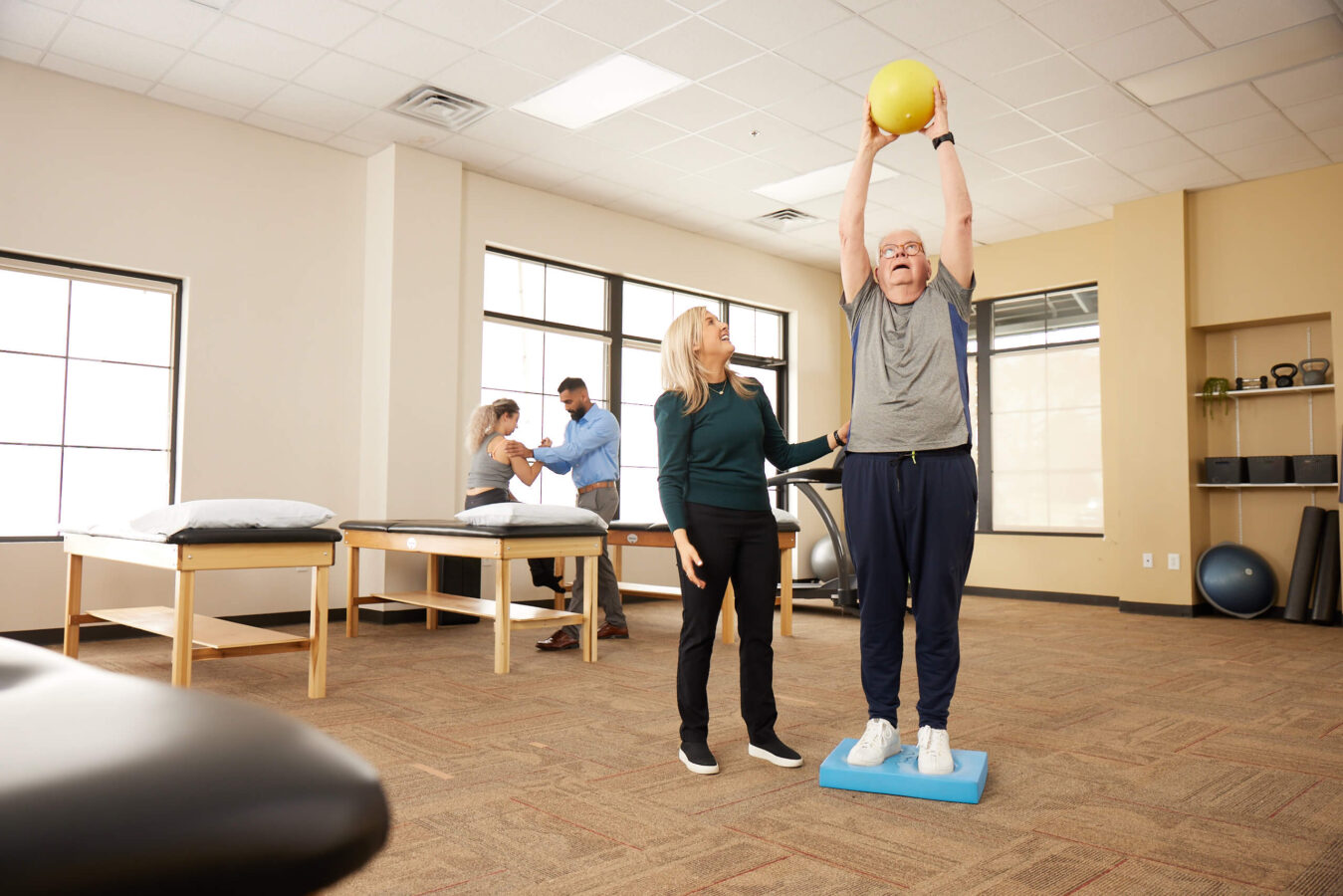
Neurological physical therapy evaluates and treats patients experiencing movement problems due to a nervous system injury or disease. Specially-trained physical therapists utilize evidenced-based technologies and treatments to help patients with neurological dysfunction, damage, or disease regain function and improve their quality of life. This article will discuss the signs you may benefit from neurological physical therapy.
The nervous system is essentially the body’s control center. It controls nearly everything you say, feel, think, and do. The nervous system uses cells called neurons to send messages throughout the body. These electrical signals move between the brain, organs, muscles, glands, and skin.
Different types of neurons serve different functions. Motor neurons tell the body to move, and sensory neurons send data from the senses to the brain. Other neurons control automatic behaviors like breathing and digestion.
The nervous system is comprised of two main parts. The brain and spinal cord form the central nervous system (CNS.) The peripheral nervous system is a system of nerves that branch out from the CNS and transport information from the brain and spinal cord to other parts of the body. The somatic nervous system manages voluntary movements, and the autonomic nervous system manages unconscious tasks. Both are part of the larger peripheral nervous system.
Changes to the central nervous system’s neural pathways can impact function in various parts of the body. There are thousands of conditions that can affect the nerves and their ability to send messages, but they generally fall under the following categories:
Now that we’ve touched on common conditions that impact nerve function, let’s look at specific signs and symptoms that you may benefit from neurological physical therapy.
Because nerve damage has a wide range of potential causes, you should contact your healthcare provider with your concerns for a thorough evaluation. Neurological physical therapy may be a key part of your comprehensive treatment plan.
Patients experiencing neurological disorders may have trouble doing the tasks and activities that once came easily to them. Functional deficits can impact the person’s overall health because they are less active. Their ability to work and care for themselves and others may be compromised. Some people experience mental health challenges when they lose their independence.
Neurological physical therapy is one tool to combat the symptoms of neurological injuries and disease. Physical therapists help patients move safely and effectively so they can resume routine tasks for an improved quality of life.
Neurological physical therapy focuses on:
Because everyone’s needs and goals are unique, every neurological physical therapy program is customized for the patient. An evaluation with a licensed physical therapist is the best way to assess your own condition.
Some conditions affecting the nerves can be healed, such as when there has been trauma or injury from other orthopedic conditions. Treatment varies from patient to patient depending on the type and extent of nerve damage.
Rest, splinting, exercise, and physical therapy help many patients restore sensation and function. In degenerative neurologic conditions, physical therapy treatment can help to maximize and maintain function as well as restore function during episodes of decline.
For other patients, surgery is medically-necessary and is often followed up by physical therapy to regain function and strength in the affected area of the body.
Are you ready to regain your independence with neurological physical therapy? Visit this link to find a physical therapy clinic near you.